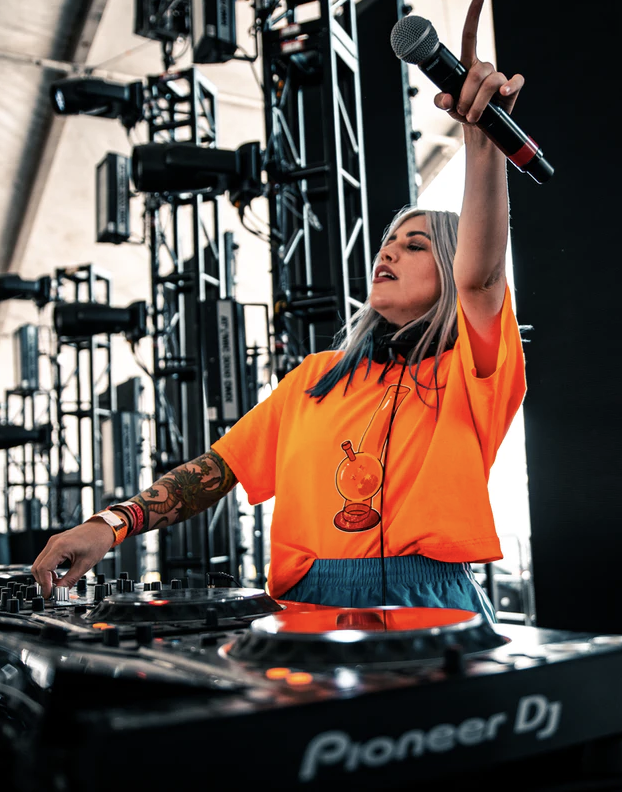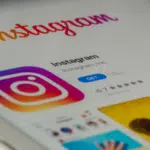How do you define yourself? Does your music represent that? Finding your niche as a musician is one of the best ways to secure a dedicated audience who really connects to you and your art. Not only does it foster deeper connections, it’ll help you navigate this crazy industry with a strong sense of self that will guide you throughout your journey as an artist. In Part 3 of our marketing journey series, we’re talking about finding your niche and how to use it to your advantage. Here’s the rundown…
Marketing Journey for the Music Industry Part 3: Finding Your Niche And Using It To Your Advantage
How Do You Define Yourself?
A lot of people in the industry will tell you focusing on your niche is the only key to success. While it’s true that building a reputation with smaller audiences can help you stand out as you establish your career, we propose a slightly different take. Instead of appealing to one genre, break the mold and let the absence of labels work in your favor.
Build a brand that is ultimately YOU, and use every niche associated with your music to your advantage. Create something that is out-of-the-box and uniquely yours.
Understanding The Culture
Every niche has its own culture. Lady Gaga has her “little monsters”. Justin Bieber has his “Beliebers”. What’s yours? Understanding the culture of your fans is the key to targeting ads, marketing, and more as you move through your career.
To do this, be active on corresponding social media. Join Facebook groups for your niche. Engage with the community. Know the history. Find out what they like and what they want to see more of within the community. You may already have songs out that meet those needs. If you do, you’re already one step ahead. Now, you see what’s missing and you know how to fill it.
That’s marketing 101 right there.
Music Data & How To Use It
Most streaming services today rely on algorithms to decipher the best song recommendations. These algorithms collect and synthesize listener data to tailor everyone’s listening experience to their unique taste. Different platforms use different algorithms to sort their data and adjust accordingly.
As different as they may be, however, these models have one main thing in common.
They all focus on the unique elements that songs possess. Because of this, what a song’s genre is classified as seems way less important now, right? In an age of unlimited streaming and extensive metadata, experts and fans alike are accepting that music taste is less linear and more of an intertwined web. Sorting music is no longer black and white, and the power to decide placement has entirely shifted to the audience.
What To Do Next…
Think about one of your songs. Break down its individual elements and consider how these elements translate to your audience’s expansive array of music choices. Think about how they will influence movement throughout these platforms.
By being aware of your music’s appeal to different genres and sub-genres, you can pick up fans from virtually any genre, wind up on all kinds of playlists, and foster connections all over the world.
——
✨ Sharpen your skills…
Types of Algorithmic Spotify Playlists and How to Get on Them
Best Streaming Analytics Tools for Artists
How To Maximize Your Chances Of Getting Featured on Spotify Playlists
How to Define Your Audience Demographics to Better Market to Your Fans
——
Tag Wisely
One of the primary ways your niche identity can help you in your career is through playlisting. Getting your songs featured on niche playlists is a great way to propel you through the ranks on platforms like Spotify and Apple Music. However, getting on these playlists comes down to how you pitch and, sometimes more importantly, how you tag.
When pitching a song to Spotify for playlisting, you’ll be asked to tag it according to genre, sub-genre, mood, style and more. This is where knowing your niche landscape will pay off. Becoming familiar with a niche allows you to tag more specifically. Elements of a song that may seem insignificant could be the key to landing a playlist.
The more specific your tags are, the more you will stand out to curators looking for music in that sub-genre.
Remember that recommendation models on Spotify are data-driven, so the way you tag any music you upload will affect which audiences it’s exposed to. That’s not to say that using every tag will get you in front of every listener… Instead, focusing on the niche of individual songs and using as much specificity as possible when tagging will get those songs to the right audiences.
Master Ad Targeting
Now that you know a lot about your audience, you can tailor your efforts accordingly. This leads to more authentic targeting and yields more authentic results in return. As a rule of thumb, Facebook ads do particularly well when it comes to niche marketing.
We all know Facebook stores everyone’s interests, likes, and dislikes. Use that to your advantage.
- Visit similar Facebook groups and use those members as a basis.
- Add those people to your own page.
- Then, from the people who watch your videos on Facebook and Instagram, you can create a Custom Audience.
- From there, you can create Facebook ads to show to this qualified audience and so forth.
Creating a Campaign
Now THIS is the big step to really push your music in front of your desired audience. The first and hardest question you need to ask yourself is, “How much money do I want to put towards advertising this?”.
Only YOU know the answer to this question. — Based on your finances, future plans, etc., come up with a reasonable number that’s not going to absolutely break the bank. Once you’ve got that number, you’re ready phase 2.
- Make sure you’re advertising on platforms that you’re active on. That way, you’ll be able to engage with our audience once they start engaging with your ads.
- Make sure you’re using high-quality and engaging assets for your ad optics. // Currently, video is the top performing asset format across all platforms that offer it. For audio DSPs, however, you’d get better engagement with a high-performing voiceover for your audio asset there.
- Be sure to have compelling verbiage for your campaign (where applicable). Refrain from being too wordy or using the dreaded “read more” truncation.
- Lastly, it’s time for scheduling. Be mindful of your audience sleep schedules, upcoming holidays, etc. – proper timing can help save money and avoid wasted engagement.
Digital marketing is a unique process for everyone. Your strategy depends on your specific goals, and there’s no “one size fits all” approach. Setting clear and actionable goals, utilizing the tools available to you, and understanding your ever-changing digital landscape will be your guides to success.
Once you’ve hit this stage, don’t forget to check out, “How to Evaluate the Progress of Your Marketing Campaign” to learn what to do next.
In Conclusion…
Understanding your niche and catering to your audience can be a game changer for finding new fans. Targeting those who already like your vibe gives you a great advantage for music discovery and retaining listeners throughout your career. As long as you put the time and effort into understanding your niche, you’ll be sure to see success.
Good luck!
//
Check out the rest of our “Marketing Journey for the Music Industry” series…
Part 1: Understanding Your Market and Audience
Part 2: Understanding Your Fanbase




